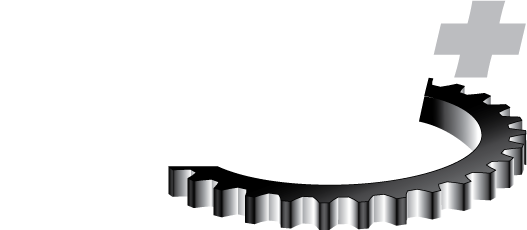
Transmission Lubricants and Lubrication Basics
Following a brief review of all common transmission technologies, this course addresses the functional lubricant requirements for each common transmission technology including lubricant theory, composition and application. Lubricants, the chemical combination of a base oil and an additive suite of chemicals, are one of the fundamental building blocks of a successful design for any mechanical component or system. Unfortunately, lubricant theory and application are not well developed in most engineering degree programs. Experience has shown that there is a great divide between the chemists or lubricant theorists and the mechanical engineers that employ lubricant products. Many chemists involved in the development, refinement and application of lubricants for mechanical transmission systems do not fundamentally understand the requirements as stated by the system designers. Likewise, many design engineers can benefit from understanding the basics of lubricants and how to best apply them. This course aims to bridge that divide.
Learning Objectives
- By completing this course, you will be able to identify, recognize or articulate:
- Common lubricant types, chemistries and specifications
- Fundamental principles of lubrication
- The meaning and use of the functional properties of current lubricant technology
- How to specify lubricant requirements
- The functional requirements of lubricants for automotive transmissions
- The various definitions and terms used in lubricants and lubrication
- Formulation and chemistry of automotive transmission lubricants
- The requirements to specify automotive lubricants for the common transmission types
Who Should Attend
- Designed to be a basic course, it is intended for anyone who is not familiar with the function, requirements, application and basic chemistry of modern passenger vehicle transmission lubricants. The material covered in this seminar is targeted at a number of design and engineering disciplines including, but not limited to:
- Design engineers and engineering managers
- Vehicle powertrain and driveline designers
- Component suppliers
- Powertrain and driveline test and development engineers
- Design services managers
- <Should chemists, tribologists, and other lubricant experts be encouraged to take day-one of this course to get the transmission technology understanding?>
Prerequisites
- Because this course is targeted at a number of design and engineering disciplines, learners should have a B.S. in engineering or related field and preferably a minimum of two years design experience in the automotive powertrain field.
Topics
- General overview of transmission function, the ‘how’ and ‘why’s, the components, their use, etc.
- Difference between ‘stepped’ and ‘stepless’ transmission technology
- Concept of ‘friction required’ transmissions (i.e. belt / chain CVT, Toroid, etc.) versus ‘friction not required’ technology (i.e. gears, etc.)
- Review of the most common transmission architectures;
- Manual Transmission (MT
- Automatic Transmissions (AT)
- Automated Manual Transmissions (AMT)
- Dual-Clutch Transmissions (DCT)
- Belt-Style CVT (B-CVT)
- Chain-Style CVT (C-CVT)
- Toroidal-Style CVT
- Lubricant requirements for manual transmissions
- Lubricant requirements for automatic transmissions
- Lubricant requirements for automated manual transmissions
- Lubricant requirements for dual-clutch transmissions
- Special Topics
- Terminology & Definitions;
- Lubricant
- Oil
- Additive
- Lubricants and their functions
- Hydraulic working fluid and power transfer
- Coolant
- Friction management
- Service life (self-protection / parts protection)
- Fundamentals of base oils
- Crude oil refining
- Classification of base oils and their properties
- Nomenclature
- Viscosity classes – SUS vs. cSt
- Synthetic base oils
- PAO’s
- Esters
- Alkylated aromatics
- PAG’s
- GTL
- Oxidation and Antioxidants
- Free radical oxidation mechanism
- Free radical antioxidants
- Hydro-peroxide decomposers
- Measuring oxidation in lubrications
- Mechanical tests
- Analytical test methods
- Exponential nature of oxidation
- Typical antioxidants
- Anti-wear agents
- The Stribeck curve and the nature of wear
- Types of wear mechanisms
- Phosphorus anti-wear compounds
- Phosphites
- Phosphates
- Thiophosphates
- Dithiophosphates
- Phosphonates
- Nature of the alkyl or aryl chain on reaction rate and anti-wear properties
- Anti-wear testing
- Typical anti-wear agents used in ATF’s
- EP agents
- Chemical nature of EP agents
- Sulfur “activity”
- Function and performance effects
- Pitting, spalling, shock-bump performance
- EP tests
- Typical EP agents
- Friction modifiers
- Chemical nature of friction modifiers
- Bonding of friction modifying films to the metal surface
- Friction modifiers and the Stribeck curve
- Measuring the impact of friction modifiers
- Bench testing – HFRR, Cameron-Plint machine, etc.
- Types of friction modifiers
- Dispersants
- Micelle chemistry and the inverted micelle
- CMC – Critical Micelle Concentration
- Chemical classes of common dispersants
- Succinimides
- Mannich bases
- Impact of dispersant on performance
- Primary function performance
- Auxiliary impact of dispersants – wear, friction, etc.
- Testing to measure the impact of dispersants
- Typical dispersants
- Detergents
- Function in lubricants
- Acid neutralization
- Dynamic friction control
- Common classes of lubricant detergents
- Sulfonates
- Phenates
- Salicylates
- Common stability and compatibility issues
- Typical detergents
- Viscosity index improvers
- Function of VII’s
- Shear stability of VII’s
- Dissolving VII in oil and producing finished fluids
- Olefin copolymers – OCP’s
- Chemical nature and properties
- Common OCP’s
- Polymethacrylates – PMA’s
- Chemical nature and properties
- Common PMA’s
- Seal swell additives
- Function of seal swell agents
- Common classes of seal swell agents
- Seal testing and the impact of seal swell agents
- Formulation – Putting it all together
- Epicyclic ATF
- Viscosity grades
- Key properties
- Components required
- CVTF
- Viscosity grades
- Key properties
- Components required
- DCTF
- Viscosity grades
- Key properties
- Components required
- Traction fluid
- Viscosity grades
- Key properties
- Components required
- Current industry trends
- Fuel economy
- Hybridization
- Drain interval
- Durability
